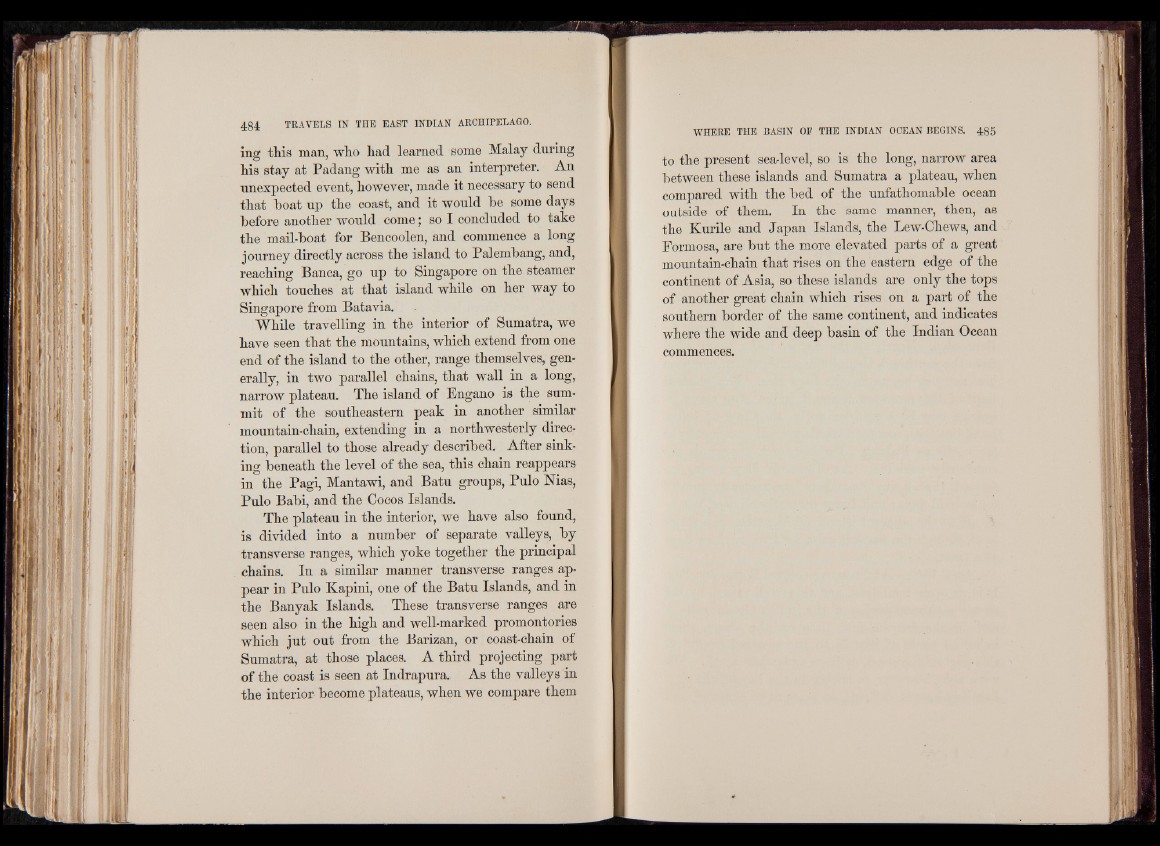
ing this man, who had learned some Malay during
his stay at Padang with me as an interpreter. An
unexpected event, however, made it necessary to send
that boat up the coast, and it would be some days
before another would come; so I concluded to take
the mail-boat for Bencoolen, and commence a long
journey directly across the island to Palembang, and,
reaching Banca, go up to Singapore on the steamer
which touches at that island while on her way to
Singapore from Batavia.
While travelling in the interior of Sumatra, we
have seen that the mountains, which extend from one
end of the island to the other, range themselves, generally,
in two parallel chains, that wall in a long,
narrow plateau. The island of Engano is the summit
of the southeastern peak in another similar
mountain-chain, extending in a northwesterly direction,
parallel to those already described. After sinking
beneath the level of the sea, this chain reappears
in the Pagi, Mantawi, and Batu groups, Pulo Mas,
Pulo Babi, and the Cocos Islands.
The plateau in the interior, we have also found,
is divided into a number of separate valleys, by
transverse ranges, which yoke together the principal
chains. In a similar manner transverse ranges ap-
pear in Pulo Kapini, one of the Batu Islands, and in
the Banyak Islands. These transverse ranges are
seen also in the high and well-marked promontories
which ju t out from the Barizan, or coast-chain of
Sumatra, at those places. A third projecting part
of the coast is seen at Indrapura. As the valleys in
the interior become plateaus, when we compare them
to the present sea-level, so is the long, narrow area
between these islands and Sumatra a plateau, when
compared with the bed of the unfathomable ocean
outside of them. In the same manner, then, as
the Kurile and Japan Islands, the Lew-Chews, and
Formosa, are but the more elevated parts of a great
mountain-chain that rises on the eastern edge of the
continent of Asia, so these islands are only the tops
of another great chain which rises on a part of the
southern border of the same continent, and indicates
where the wide and deep basin of the Indian Ocean
commences.